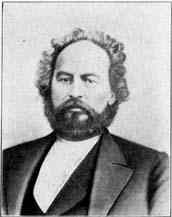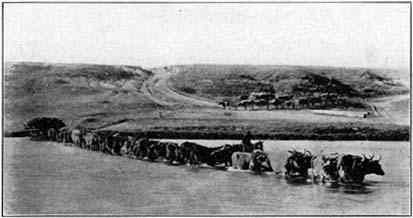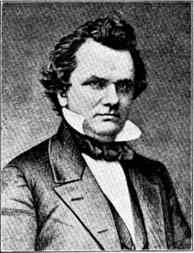|
ORGANIZATION
CHAPTER VII

Oliver P. Mason, Nebraska's First Chief
Justice
The first
movement to organize the territory of Nebraska was a "war
measure"--a means of fighting England for the possession
of Oregon. The first time the name "Nebraska" occurs in
our annals applied to any tract of land is in the annual
report of Secretary of War William Wilkins, November 30,
1844. The secretary discusses the dispute between England
and the United States over Oregon, which had been going
on for thirty years, and refers to the results of
Fremont's first explorations in the Rocky Mountains, just
published, as foreshadowing a great movement of
population to the Pacific. He then asks congress for two
things: First, the organization of a new territory in
order to throw the authority of the federal government
around the Oregon emigrants. Upon this point I quote in
full as it is the earliest suggestion of the name I have
found. He says:
"The Platte or Nebraska
being the central stream leading into or from the South
Pass would very properly furnish a name to the territory
which I propose suggesting to be erected into a
territorial government, with, and preliminary to, the
extension in that direction of our military posts. I
would confine the Nebraska territory to our undisputed
possessions on this side of the Rocky Mountains. Its
boundary line would commence at the mouth of the Kansas
and run up the Missouri river to the mouth of the Running
Water and pursue that river to the head of its northern
branch, thence due west to the Wind river chain. From
this point turning southward the line would continue
alongside the Wind river range and the main chain of the
Rocky Mountains to the head of the Arkansas, and
following that stream to the mouth of the Pawnee fork,
would pass by the heads of the Neosho and Osage again to
the mouth of the Kansas."
The second item asked
from congress is an appropriation of $100,000 to erect a
chain of forts from the Missouri river to the summit of
the Rocky Mountains. These forts and the pioneer settlers
who will come into the new territory when it is organized
are to be a preparation for war with England. Very
significantly the secretary concludes, "troops and
supplies from the projected Nebraska territory
|






